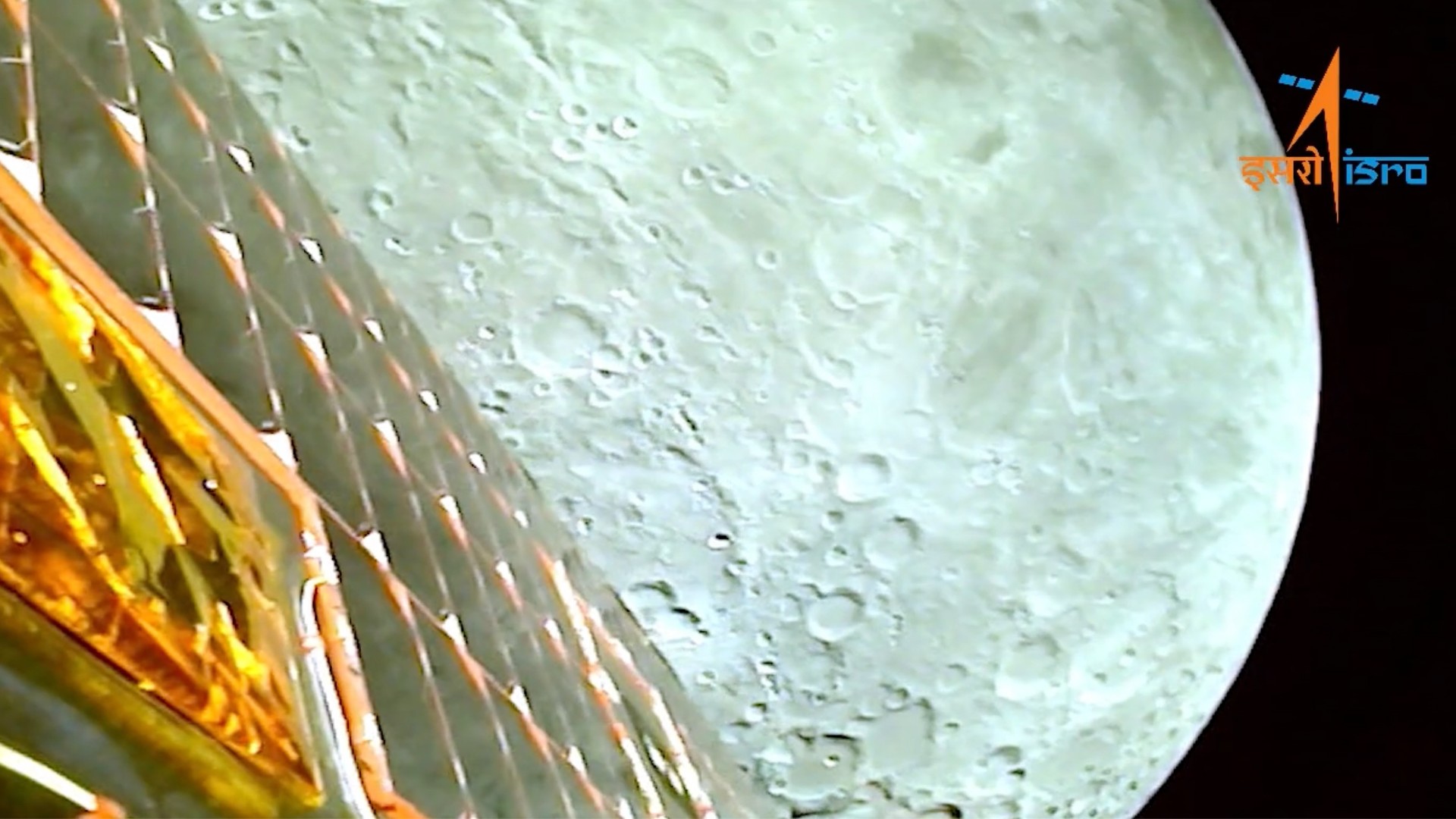See stunning new photos and videos of the moon as India's Chandrayaan-3 rover enters lunar orbit
India's Chandrayaan-3 rover reached lunar orbit on Aug. 5, sharing new photos and videos of the moon ahead of its planned Aug. 23 landing.

India's Chandrayaan-3 lunar lander has returned its first images from the moon after entering orbit around our nearest neighbor.
The Indian Space Research Organisation (ISRO) released the images on Sunday (Aug. 6), showing that the spacecraft had reached its destination ahead of a lunar landing attempt expected on Aug. 23.
Chandrayaan-3 launched on July 14, heading into an initial highly elliptical Earth orbit. It then gradually raised its orbit before making a burn on July 31 that set it on course for the moon. The spacecraft successfully entered orbit around our natural satellite on Saturday (Aug. 5), according to ISRO.
Related: Days before dying, Japan's lunar lander snaps glorious photo of Earth during a total solar eclipse
The spacecraft will conduct further engine burns to bring it into a circular track about 60 miles (100 kilometers) above the surface of the moon a week ahead of the expected landing attempt.
The Moon, as viewed by #Chandrayaan3 spacecraft during Lunar Orbit Insertion (LOI) on August 5, 2023.#ISRO pic.twitter.com/xQtVyLTu0cAugust 6, 2023
The newly released images, which ISRO stitched into a 45-second video, show the solar arrays of the Chandrayaan-3 spacecraft in the foreground. The moon, with features including large impact craters and lunar mare, or seas, is in the background.
The 6-billion-rupee (roughly $73 million) Chandrayaan-3 mission aims to make a precise landing in the vicinity of the moon's south pole. If it's successful, India will join the United States, the former Soviet Union and China as the only nations to perform a soft lunar landing.
Get the world’s most fascinating discoveries delivered straight to your inbox.
The mission's lander, known as Vikram, also carries a small rover called Pragyan. The pair will spend the best part of a lunar day (about 14 Earth days) conducting surface operations and experiments before succumbing to the deep cold of the lunar nighttime.
Originally posted on Space.com.

Andrew is a freelance space journalist with a focus on reporting on China's rapidly growing space sector. He began writing for Live Science sister site Space.com in 2019, and he also writes for SpaceNews, IEEE Spectrum, National Geographic, Sky & Telescope, New Scientist and others. Andrew first caught the space bug when, as a youngster, he saw Voyager images of other worlds in our solar system for the first time. Away from space, Andrew enjoys trail running in the forests of Finland.



